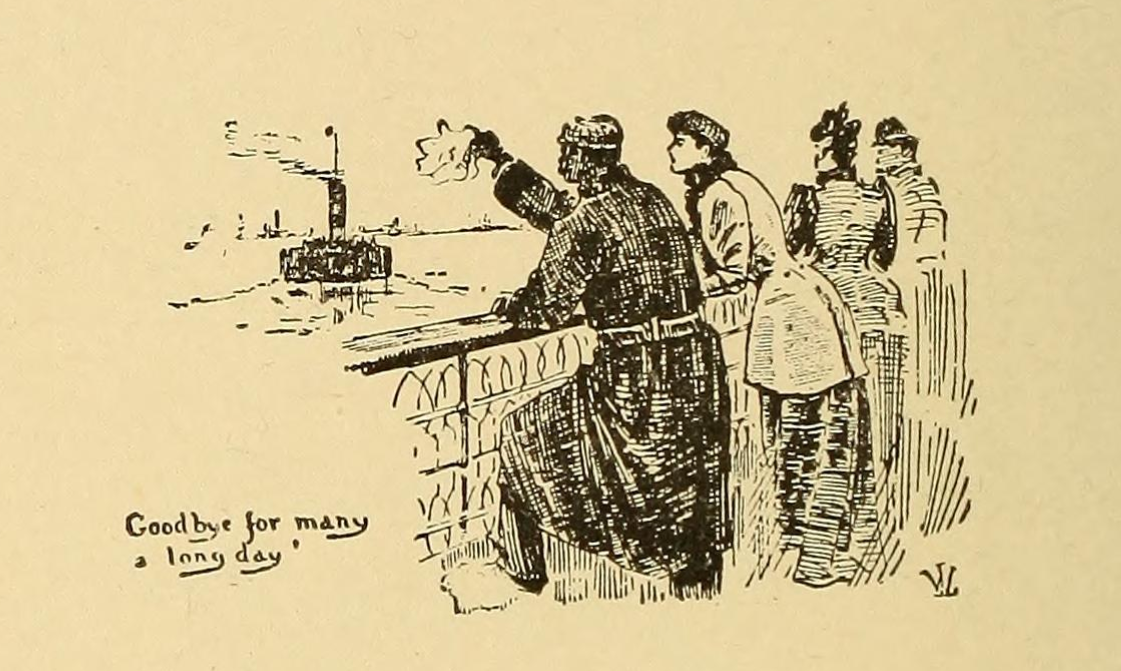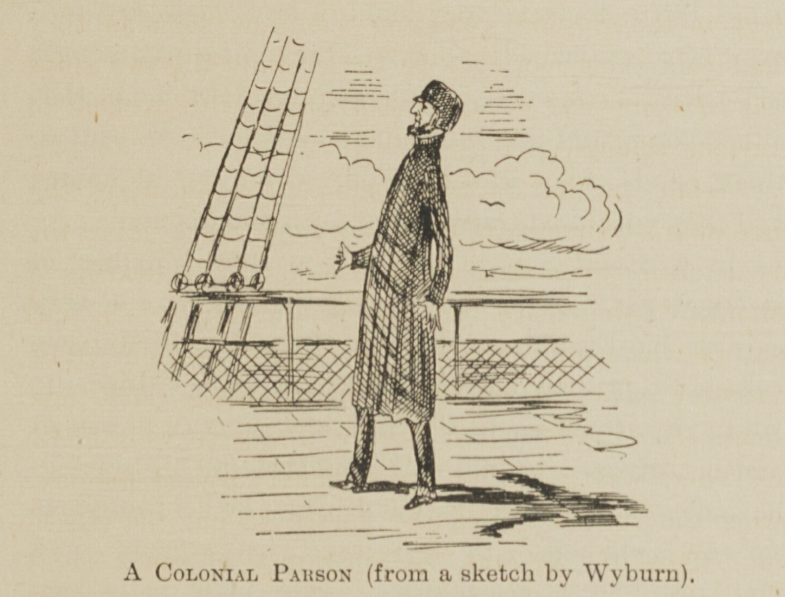AustLit
-
The Nineteenth-Century Travel Writing dataset includes almost 500 books written about one of key periods in Australia’s modern history. The project was led by Associate Professor Anna Johnston and supported by an Australian Research Council Queen Elizabeth II Fellowship (DP0770685). The University of Tasmania and The University of Queensland provided institutional support for Anna and her team of research assistants.
The nineteenth-century British Empire provided the physical infrastructure and ideological rationale for travel and travel writing to flourish in the southern hemisphere. Travel stimulated many visitors to document Australia’s environment and distinctive flora and fauna. Indigenous peoples and cultures, convicts and penal settlements, and settler colonial society were described by colonial officials, professional travellers, and private tourists in non-fiction writing that addressed armchair readers in Britain and beyond. The dataset reveals an important and influential part of Australia’s literary history, and the refinement of ideas about Australia in the northern hemisphere imagination.
Many kinds of travel writing contributed to the dense reciprocal relationship between colonial and imperial cultures. Official state-sponsored explorers were only one source: others included independent adventurers; scientific observers; colonial officials and their families; naval personnel; writers and journalists seeking good ‘copy’; and religious travellers. The colonial world was littered with curious Britons eager for information to use in narratives which they would circulate back home, either in publication or in private circles. Publishers were keen for material from the new settler colony established in 1788, and an energetic and opportunistic print culture exploited these interests. Travel writing, and more broadly writing derived from travel and exploration, was central to the colonisation of Australia (Johnston, 'Australian Travel Writing,' 271).
-
Travel writing is a notoriously difficult genre to define because it has links with historical records such as journals as well as fictional accounts of imaginary travels, which typified European writing about Australia until the eighteenth century. (See Paul Longley Arthur Virtual Voyages: Travel Writing and the Antipodes 1605-1837). Joan-Pau Rubies defines the genre expansively in sixteenth- and seventeenth-century European writing to include a varied body of texts that 'takes travel as an essential condition for its production' (Joan-Pau Rubiés, 'Travel Writing as a Genre: Facts, Fictions, and the Invention of a Scientific Discourse in Early Modern Europe.' Journeys 1, no. 1-2 (2000): 5-35).
Prior to 1900, 'voyages and travels' was the preferred term, embracing a vast body of texts that could include ships ’ logs, travellers’ journals and letters, merchants’ accounts, exploration journals, shipwreck and captivity narratives amongst many others. Carl Thompson describes how travel writing 'has a two-fold aspect. It is most obviously, of course, a report on the wider world, an account of an unfamiliar people or place. Yet it is also revelatory to a greater or lesser degree of the traveller who produced that report, and of his or her values, preoccupations and assumptions. And, by extension, it also reveals something of the culture from which that writer emerged, and/or the culture for which their text is intended' (Carl Thompson, Travel Writing: The New Critical Idiom, Routledge, 2011. 10).
In the modern British Empire, travel writing formed part of a complex and ever-changing print culture, especially in the nineteenth century as cheaper publishing flourished and literacy increased exponentially. When British (and other) travellers described the new Australian colonies, they revealed the anxieties and the hopes held for Australia, which was both exotic and in many ways deeply familiar in its large British emigrant population.
For this dataset, the following criteria were used:
- book-length non-fictional narratives based on experience and direct reportage;
- the Australian colonies form a significant part of the journey and narrative, although they may be part of a global tour;
- some major emigration guides are included: however, the many derivative emigration pamphlets are not included;
- amateur and professional writers are included, and their biographical details have been confirmed in most instances.
-
The dataset records book-length narratives based on travellers’ experience rather than imagination or secondary sources. These include letters home, diaries, and journals that were later edited and shaped into an extended narrative and published as a discrete book. It records only Anglophone texts, although some influential works in translation are included, such as François Péron’s A Voyage of Discovery to the Southern Hemisphere (1809).
Early travel accounts by colonial officials such as Watkin Tench’s A Narrative of the Expedition to Botany Bay (1789) preceded others such as Barron Field’s Geographical Memoirs on New South Wales (1825), which combined travel narratives with geological, meteorological, and botanical observations of New South Wales and Van Diemen's Land by numerous contributors. Natural history enthusiasts such as George Bennett found Australia and Asia fascinating sources of knowledge that was new to European science, as evident in Bennett’s Wanderings in New South Wales, Batavia, Pedir Coast, Singapore, and China (1834). As travel routes opened for more free settlers, and the Australian ports became central in Britain’s maritime empire, the number of travellers increased as did the number of published travel narratives.
As the geographical visualisation of the Nineteenth-Century Travel Writing dataset reveals, the earliest colonies of New South Wales and Van Diemen’s Land attracted the most attention from travellers and thus the most travel writing. Tasmania remained fascinating to visitors, and some global travellers such as Jessie A. Ackermann apologetically glossed over the rest of Australia but found Tasmania essential to mention in her narrative. For this reason, Tasmanian travel writing is a fascinating regional subset as Anna Johnston explains,
Although the label ‘little England’ can be found in travel accounts of other southern colonies, it was Van Diemen’s Land/Tasmania that most regularly attracted the epithet. Due to a cool climate, Georgian architecture, and the colonial gentry whose stone mansions and large rural estates–bounded with English-styled hedgerows–stretched along the central north-south transport route, Tasmanian environments were peculiarly conducive to claims of Englishness (Johnston, 'Little England', 19).
Jane Roberts reported on Hobart churches full of a general body of “well dressed people, of about the same style and appearance as a country town in England” in her book Two Years at Sea (1834), which also provided a rare, early account of the Swan River colony. Visiting military officers such as Captain Henry Butler Stoney described how he became deeply homesick when he heard the Regimental Band in Hobart in his A Year in Tasmania (1854): 'making the exiled soldier fancy, with but little stretch of the imagination, that he is still in his own dear native land, ’neath British skies and Britain’s brightest eyes around him'. In The Antipodes and Round the World (1870) Alice Frere declared: 'Were I obliged to live in the colonies, I should wish my lot to be cast in Tasmania. There is something homelike in the gentlemen’s places here; very different from the other colonies'.
-
Emigration re-shaped the Anglophone world during this period, and many travellers sought to provide advice to assist others in their migration journeys. Some substantial and influential emigration guides are included, however the plethora of emigration pamphlets are not included: they were often highly derivative and based on textual accounts re-packaged by entrepreneurial publishers who had not undertaken any travel to the colonies. Authors such as Sidney Smith, political agent and public speaker, wrote books of advice and information for potential emigrants to the various British colonies such as Whether To Go and Whither? (1849) . Others advocated for particular colonies, such as T. Horton James’ Six Months in South Australia, which was dedicated to the Colonization Commissioners of South Australia: James describes his book as a 'little but imperfect account of a colony that cannot fail of becoming one day or other a fine English colony'.
Readers are advised that the representations of Aboriginal and Torres Strait Islanders in these travel accounts are dated and at times offensive, containing words, terms or descriptions which may be culturally sensitive and are considered inappropriate today, but which reflect the period in which they were written. Many books repeat derogatory racial prejudice, often second-hand from colonial informants. Yet some writers noted the extent of colonial violence and Indigenous dispossession, alongside observations of everyday First Nations life in cities, towns, and remote locations. For example, Colonel Godfrey Charles Mundy wrote about and included an illustration of the 1838 Myall Creek Massacre in Our Antipodes: Or, Residence and Rambles in the Australasian Colonies with a Glimpse of the Gold Fields (1852). See Jane Lydon’s analysis in 'Anti-Slavery in Australia: Picturing the 1838 Myall Creek Massacre. History Compass (2016): 1–12. https://doi.org/10.1111/hic3.12330.
You might be interested in...







